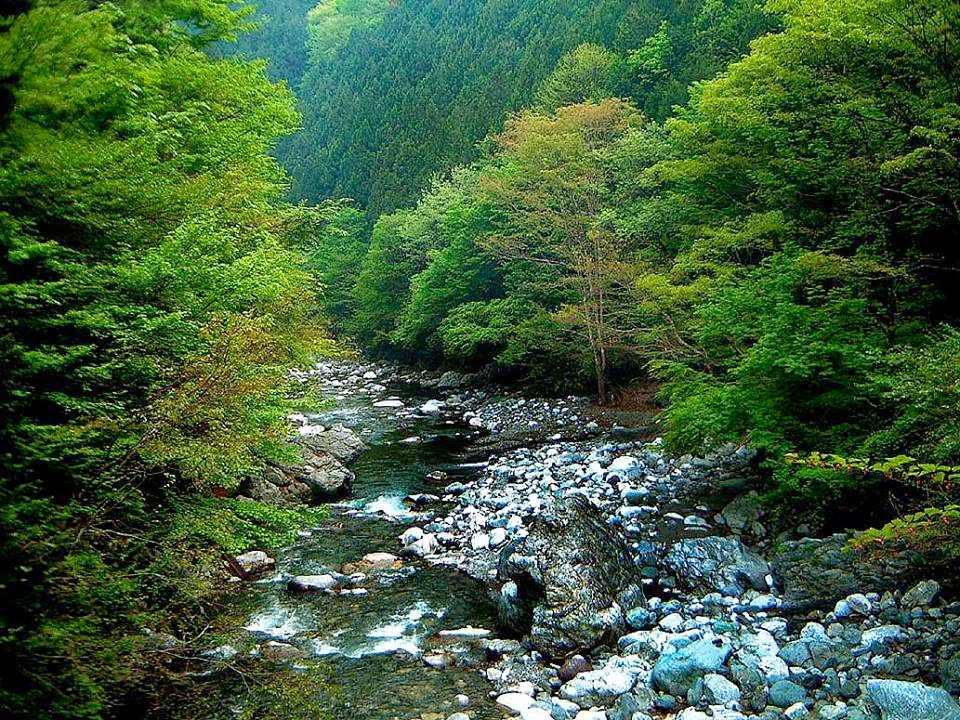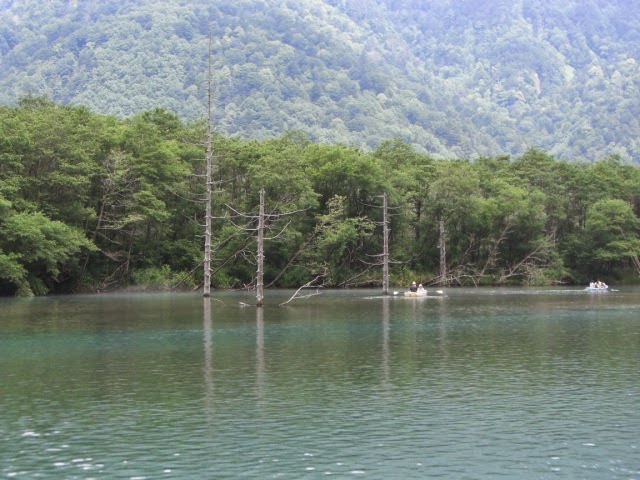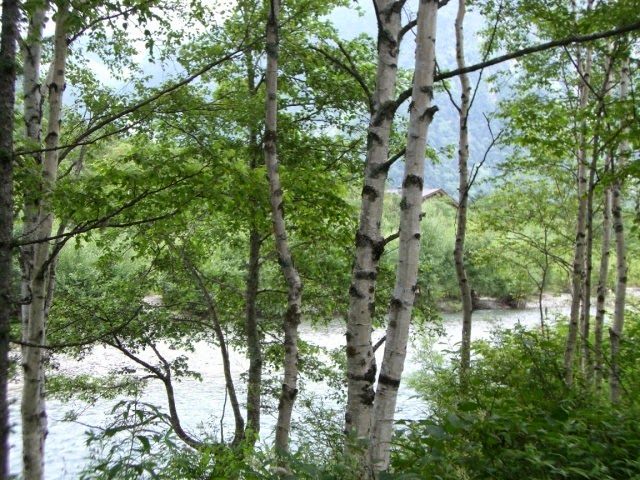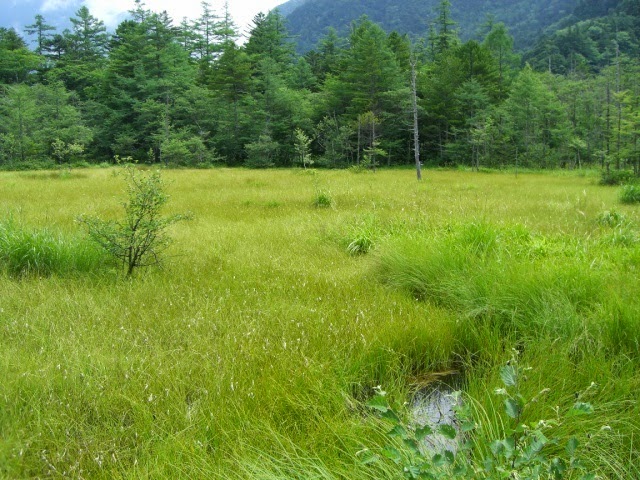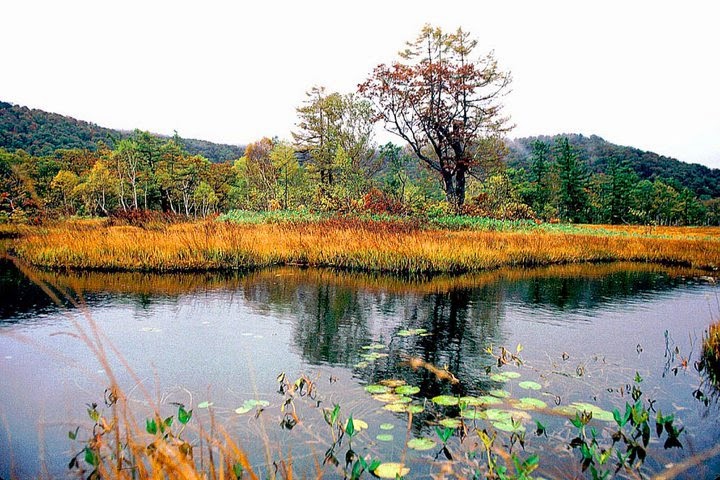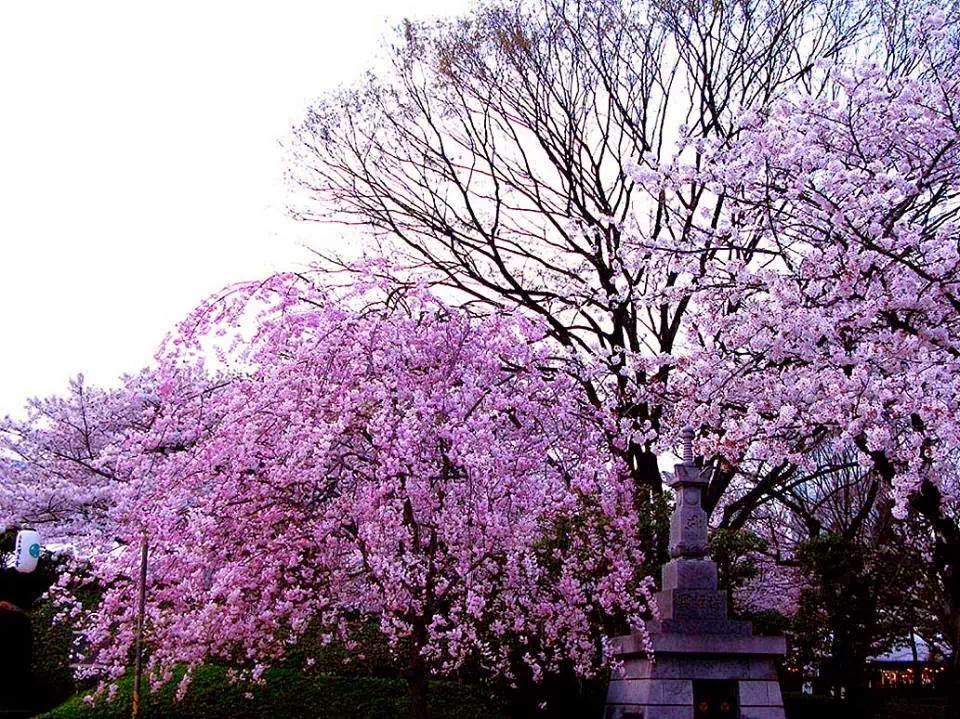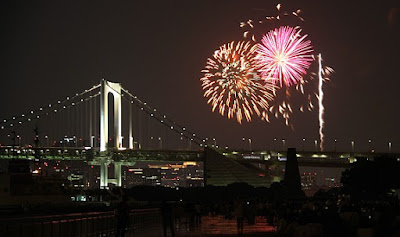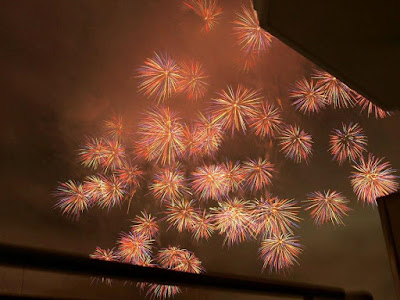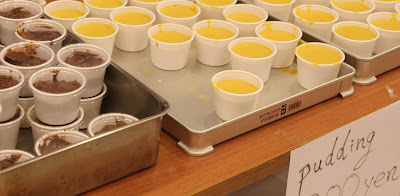Okutama is the far west side of Tokyo where has lots of nature. There are many hiking courses, and most of them are one-day-trip distance from Tokyo Metro without car. Okutama is considered as the Oasis of Tokyo. Lake Okutama is one of popular spot in Okutama. It has many tourist attractions. In winter, unlike Tokyo cities, Okutama has snow and frozen waterfalls. Okutama is a two hour drive west from downtown Tokyo. The area is filled with beautifully aged trees, and has the largest number of them in the country. There are camping sites, hot springs and museums available. At a local center called Yamano-furusato-mura(山のふるさと村) you can experience pottery, carpentry, Soba noodle making and many other activities.
The Forest Therapy
The forest has always been said to have a soothing effect on the human body. Japan's Forest Therapy Society (FTS) found in 2004 started their research to unravel this mystery. The Forest Therapy Total Project was launched the following year allowing cites and paths in Japan to be officially approved as forest therapy cites and therapy roads by the government after passing series of tests. It also allows people to acquire a license as forest therapists. So far, 53 locations in Japan are approved as therapy cites and roads. For those who plan to visit Tokyo, I would recommend the only forest approved in Tokyo; the Okutama forest.
Scientists in Japan have been learning a lot in recent years about the relaxing effects of forests and trees on mental and physical health. Based on their findings, some local governments are promoting “forest therapy.” This means that forests can lower stress and make people feel at ease, he said, noting that findings in other physiological experiments, including fluctuations in heart beats and blood pressure, support this conclusion. Taking a walk in a forest, or “forest bathing” as it is sometimes called, can strengthen the immune system.
Mount of Mitake: Musashi Shrine and Tozan Cable Car
Mount of Mitake
The Mount Mitake areas has many miles of trails connecting famous peaks, water falls, temples, scenic vistas and interesting geographic features. Some of the main trails include the steep trail from the base of the cable car to the top cable car station (about 60 to 90 minutes), the walk from the top cable car station to the shrine (20 to 30 minutes), the walk from the shrine to Nanayo Water Fall (30 to 45 minutes), and the scenic loop back to the temple from the water fall, past some tengu statues (45 to 60 minutes). Another famous area is the Rock Garden, not far from Nanayo Water Fall.
Musashi Shrine
Prior to the establishment of Shinto in Japan, Shugendo spiritual mystical religion was very popular. Shugendo centered on this mountain and several others like nearby Takao-san. Followers of Shugendo, known for mountain and nature worship, believe in the bond between nature and humanity. Shugendo legends tell of spirits spirits called Tengu, often symbolized as one with a long, phallic nose and one with a bird's beak on its face. Nearby the top of Mitake-san there is a small temple with statues of these famous tengu. The tiny temple is located on a rocky knob between Nanayo Water Fall and the Rock Garden. The only way to the top of the rocky outcropping is to grab hold of the steel chain to balance yourself on the short climb.
Tozan Railway at Mitake Mountain
Mitake Tozan Railway is the name of the company, under the Keio Group, that operates the cable car and the chairlift at Mount Mitake near Ome. The Mount Mitake Cable Car run on a one kilometer track (0.6 miles), but it rises an impressive 424 meters (1,390 feet) vertically. The cost for a one way trip is about 600 Yen, with a slight discount for a round trip ticket. The station t the base of the mountain is called Takimoto, while the upper station is Mitake-san. The Mitake-san Station area has a few small restaurants and shops, vending machines, restrooms and an overlook that offers views of Tokyo on a clear day. From the upper station, it is a 20-30 minute walk to Mitake Shrine near the top of the mountain. Parking at the base of the cable car is about 1,000 Yen per-day.
Nanayo Water Falls
Nanayo Water Fall (in Japanese 七代の滝) is a nice series of falls just a short hike from the top of Mount Mitake near Ome. People says there are seven total drops in these falls, totaling 50 feet from top to bottom, but you can only see one drop easily from the hiking trails. At this drop in Nanayo Falls, there is a pool, secluded behind boulders where you can dip your feet in the cold water, or even cool down a beer before enjoying it at the base of the falls. To get to Nanayo Water Fall, take the cable car to the top. Walk through the village toward the Mitake Temple. Just before the temple, turn left, and follow the busy trail for just a few minutes until you arrive at a small picnic area and restaurant. Take the small trail down the steep steps to the left, and you will arrive at the falls in about 20-30 minutes. Both trails to the falls are steep and a bit treacherous.
Japanese Weasel at Okutama Area's
Japanese weasels are small orange-yellow colored carnivorous animals native to the Japanese islands of Honshu, Kyushu and Shikoku. These animals are larger than cats, with a body length of about 14 inches, plus a tail that is another 7 or 8 inches long. These animals are carnivorous, and they consume mice, frogs, reptiles, insects and crayfish.
While on a drive in the Okutama area, we were on a small back road heading toward Mt Takanosu. The section of road we were driving on was next to a steep hillside covered in a metal screen to prevent rocks from falling on the road. Suddenly we saw a weasel try to duck under the metal mesh, but it realized that it wouldn't fit behind the screen, so it scrambled back out, on the side of the screen next to the road, and climbed the screen to safety.
Lake of Okutama
Lake Okutama, formed by Ogochi Dam, lies at the far western edge of Tokyo in the town of Okutama, Nishitama District. The large lake was constructed from 1938 to 1957, and it is the largest source of water for the city of Tokyo. At the time of its completion the Ogochi Dam was the world's largest, with a dam height of 149 meters and a length of 353 meters. The construction of the dam displaced 6,000 people and submerged nine shrines, which were replaced by Ogouchi-jinja Shrine, located on a peninsula jutting into the lake.
The north shore of the lake is famous for its Some 10,000 cherry trees which bloom during mid-April each year. The lake is accessible by car from Tokyo with a two hour drive. You can also take the Chuo Line JR train to Tachikawa, then switch to the Ome Line to Okutama or a number of other stations near the lake.
The modern side of Tokyo has its attractions, but how about adding to your trip Okutama? After spending an exciting time shopping and sightseeing in downtown Tokyo, a few days in the therapeutic forest of Okutama will do the trick refreshing you in and out.
